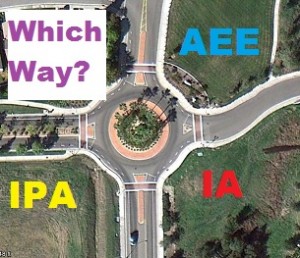
Covered California offers confusing titles for Assister Program
Covered California held their second webinar on the development of the In-Person Assister Program (IPA) this past June 6th to update folks on some of the changes that have been approved. There was very little new information, but plenty of additional confusion from participants over the role of community clinics, Assister Entities and insurance agents. It could be that the confusion is being generated from more people taking an interest in the program and trying to grapple with the variations of the term Assisters.
What am I?
The bulk of confusion is being driven by titles that are almost interchangeable.
- Assister Enrollment Entities: Entities or individuals registered by the Exchange to provide one-on-one consumer assistance. Assister Enrollment Entities shall be registered in the In-Person Assistance Program. (AEE)
- In-Person Assistance Program (IPA Program): The Program whereby Assister Enrollment Entities may be compensated for successful enrollment of consumers in the Exchange.
- In-Person Assister: An Individual Assister who is affiliated per Section 6654 with an Assister Enrollment Entity that is registered in the IPA Program. (IPA)
- Individual Assister: An individual who is certified by the Exchange per Sections 6654 or 6656 to provide one-on-one-consumer assistance. (IA)
Covered California still has no application
All of the Assister Program business is separate from the Navigator Program and the Outreach and Education program. Because they haven’t finalized all the rules and regulations of becoming an Assister, all Covered California staff can do is direct people interested in becoming and AEE, IPA or IA to fill out an interest form.
Community Clinic confusion
Several callers were still confused about the status of community clinics being Assister Enrollment Entities and the employees being certified In-Person Assisters. Part of the confusion might have developed from a request to change the definition of community clinic. Covered California staff has recommended maintaining the existing classification, and thereby the definition, of community clinics as not being eligible for compensation.
In-Person assistance for free
However, just because a person or organization isn’t eligible to receive the $58 compensation for a successful enrollment doesn’t mean they can’t be an Assister. The list of entities eligible to be an Assister, but not receive compensation, includes no organization that provides health care is eligible: providers, institutions, clinics, or county health departments. The bottom line is that health care providers can send their employees to the Assister training and help enroll individuals into a plan offered through Covered California, but there will no remuneration for their efforts.
Closing the door on insurance agents
Staff did respond to an excellent suggestion to prohibit insurance agents from paying Assisters or providing ‘in-kind support” such as free copies, co-branded material, travel expenses or reduced rent. Covered California staff agreed to the prohibitions that would allow agents or general agencies from essentially co-opting In-Person Assisters or Entities into a pipeline of referrals.
Will training schedule get pushed back like Bay bridge?
From the webinar discussion Covered California is still on track to start training in the summer with one part being a three-day workshop followed by additional on-line information and testing. They are hopeful to offer the complete training on-line in November. As this is June and the Board still has to approve the final regulations for the IPA Program after “stakeholder feedback” from this webinar; holding training seminars this summer will be a stretch.

